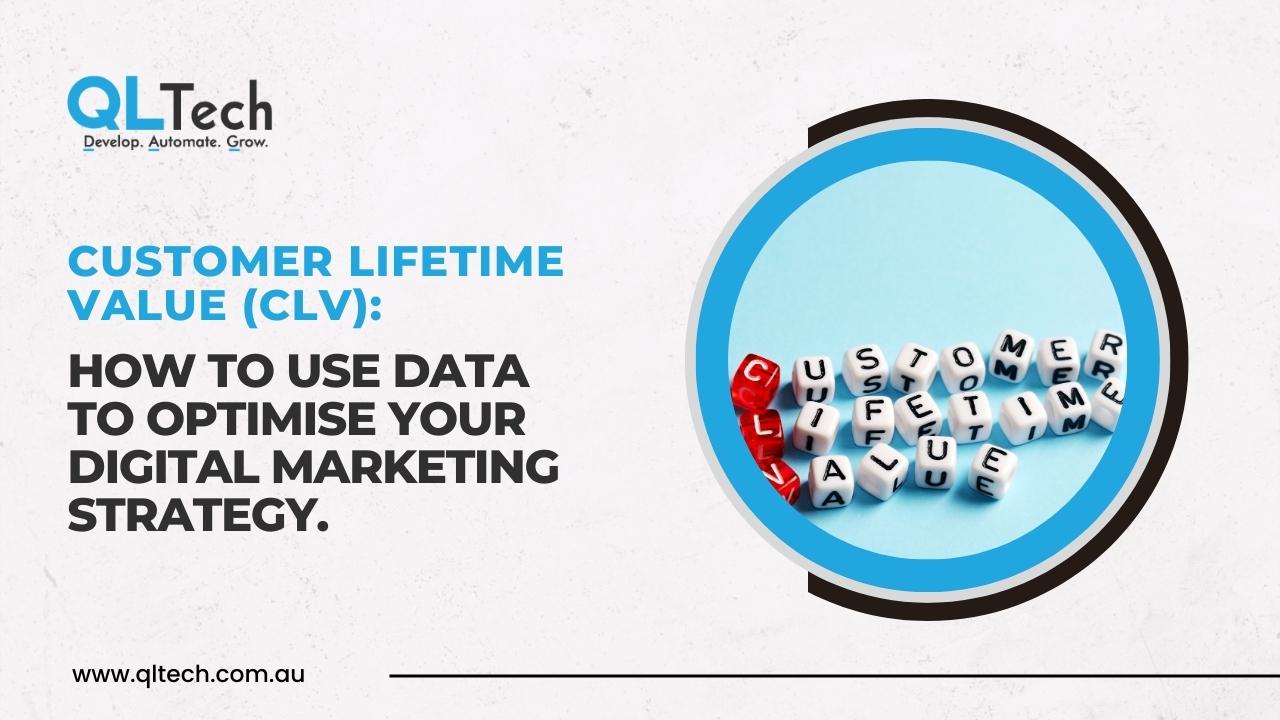Customer Lifetime Value (CLV): How to Use Data to Optimise Your Digital Marketing Strategy
Customer Lifetime Value (CLV) is a metric that measures the total value of a customer over their entire relationship with a company. It is a critical metric for businesses because it helps them understand the profitability of their customers and the overall health of their business. In this blog post, we’ll discuss how to use data to optimise your digital marketing strategy by focusing on CLV.

Define your customer segments: Not all customers are equal. You need to define your customer segments based on factors such as demographics, behavior, and purchasing patterns. By doing so, you can identify the segments that are most profitable and focus your marketing efforts on them.
Calculate your CLV: To optimise your digital marketing strategy, you need to know your CLV. Calculate your CLV by looking at the total revenue a customer generates over their lifetime with your company and subtracting the costs associated with acquiring and servicing that customer.
Identify the factors that influence CLV: There are many factors that influence CLV, such as customer loyalty, retention, and frequency of purchases. By identifying the factors that influence CLV, you can focus on improving those areas to increase customer lifetime value.
Use data to personalise your marketing: Personalisation is key to increasing customer lifetime value. Use data to personalise your marketing messages and offers based on the customer’s behavior, preferences, and purchase history.
Focus on customer retention: Customer retention is critical to increasing CLV. Use data to identify customers who are at risk of leaving and take proactive measures to retain them. This can include offering loyalty rewards or providing exceptional customer service.
Optimise your customer acquisition strategy: Acquiring new customers can be expensive, so it’s important to optimise your customer acquisition strategy. Use data to identify the most effective channels for acquiring new customers and focus your efforts on those channels.
Use customer feedback to improve your products and services: Customer feedback is a valuable source of information that can help you improve your products and services. Use data to collect feedback from your customers and use it to make improvements that increase customer satisfaction and loyalty.
Test and iterate: Digital marketing is constantly changing, so it’s important to test and iterate your marketing strategies. Use data to measure the effectiveness of your marketing campaigns and adjust your strategies as needed to improve your results.
In conclusion, optimising your digital marketing strategy using CLV requires a data-driven approach. Define your customer segments, calculate your CLV, identify the factors that influence CLV, personalise your marketing, focus on customer retention, optimise your customer acquisition strategy, use customer feedback to improve your products and services, and test and iterate. By following these steps, you can increase customer lifetime value and drive long-term profitability for your business.